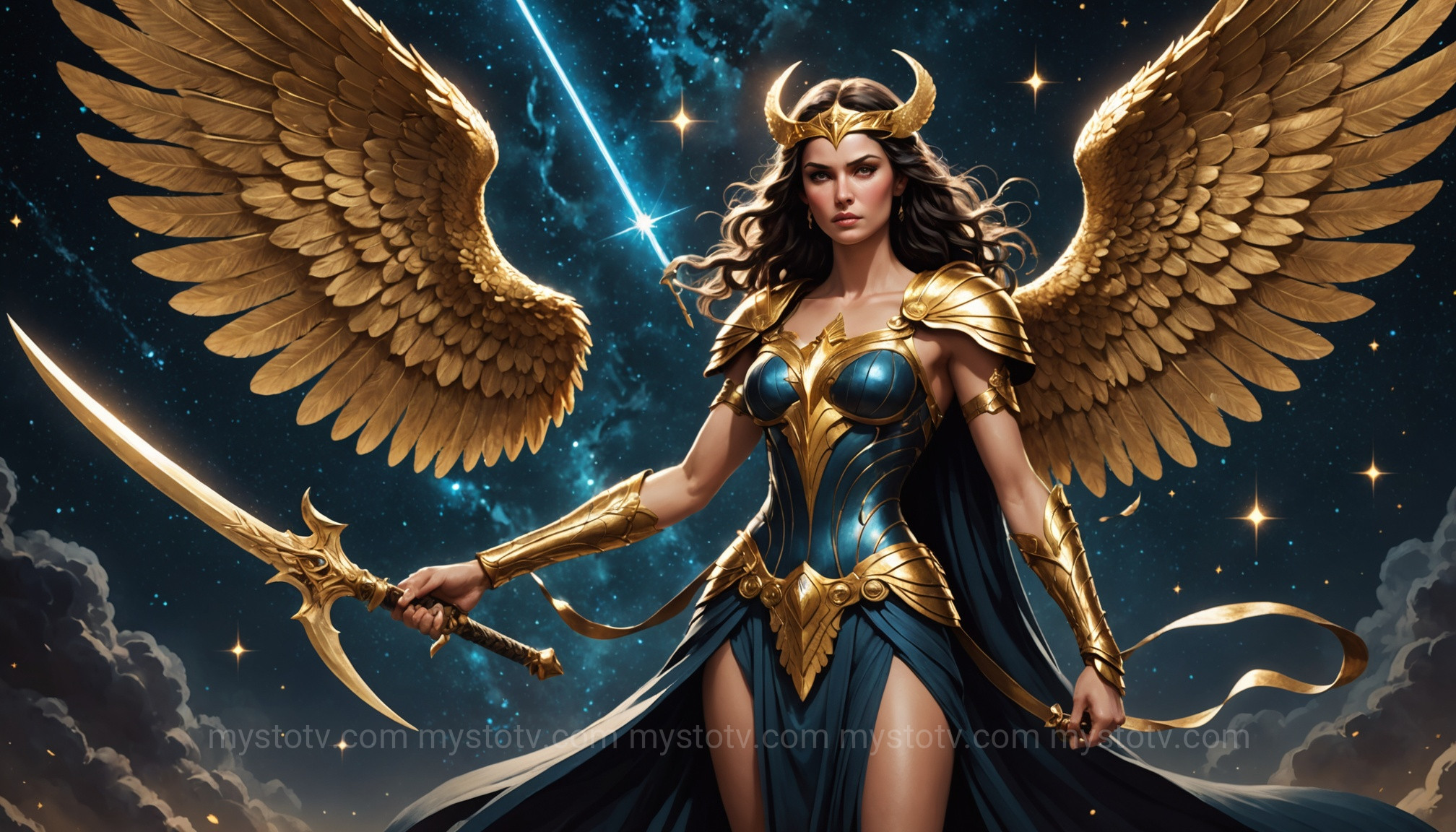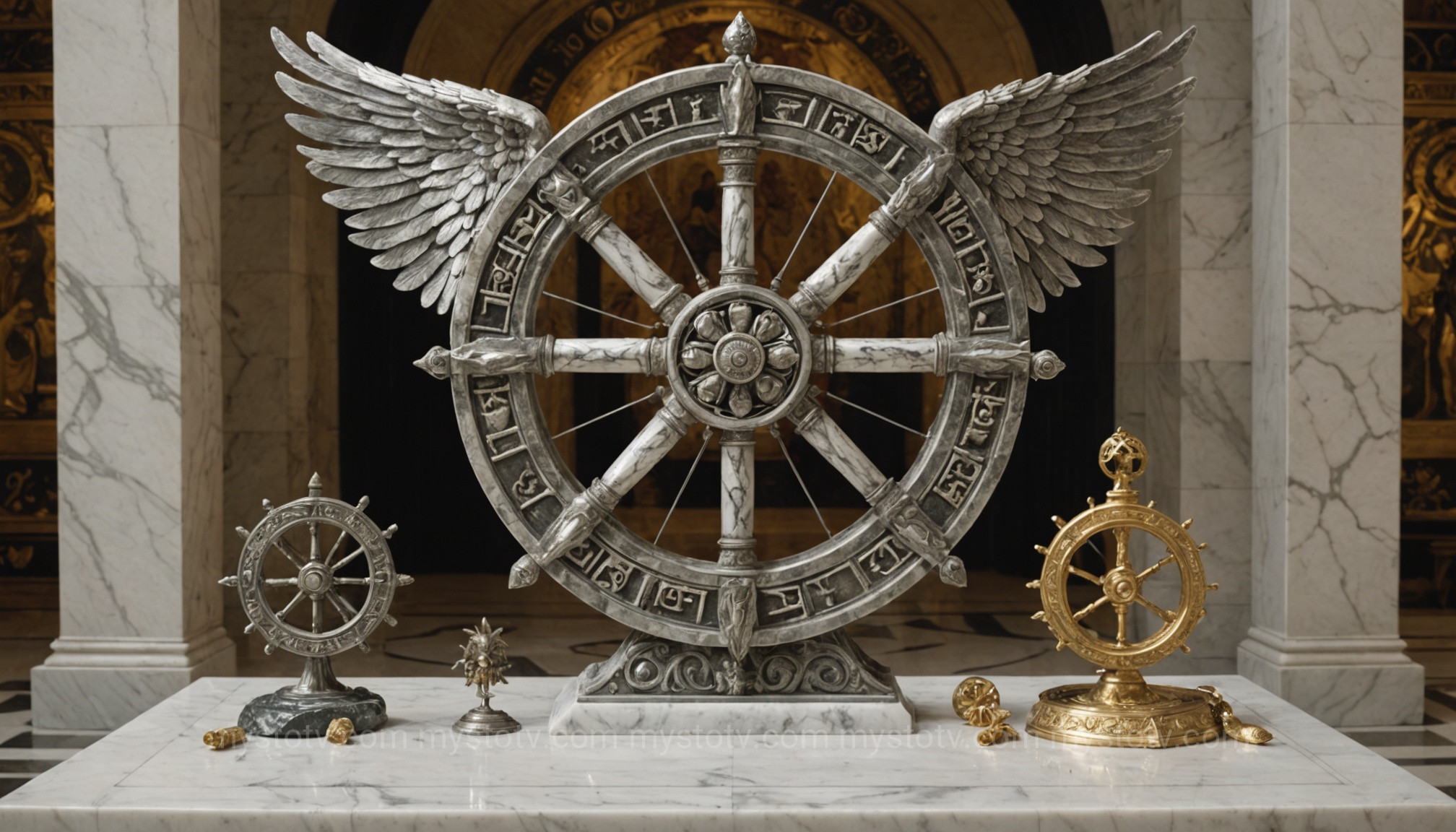Have you ever watched someone consistently act with arrogance, cutting others down and taking more than their fair share, only to see their world eventually crumble? There's a certain quiet, almost cosmic satisfaction in that moment. It's not about gloating; it’s about witnessing a sense of balance being restored to the universe. This profound feeling, this instinct that profound arrogance invites an equal and opposite downfall, has a name and a face in ancient mythology. It's the very essence of the force that the Greeks sought to understand when they asked, who is Nemesis Greek goddess? She is the divine arbiter of this universal law, the embodiment of righteous indignation and the inevitable consequence that follows human hubris. Understanding her story is to understand one of humanity's oldest attempts to make sense of justice and fate.
Contents
- 1 Defining Who is Nemesis Greek Goddess: More Than Just Vengeance
- 2 The Obscure Origins of Who is Nemesis Greek Goddess
- 3 The Core Function of Who is Nemesis Greek Goddess: Hubris and Divine Retribution
- 4 Key Myths Showcasing Who is Nemesis Greek Goddess in Action
- 5 The Symbols and Depictions of Who is Nemesis Greek Goddess
- 6 The Lasting Legacy of Who is Nemesis Greek Goddess: From Ancient Cults to Modern Culture
- 7 Frequently Asked Questions about Who is Nemesis Greek Goddess
- 8 Conclusion: The Enduring Power of Divine Balance
- 9 References
Defining Who is Nemesis Greek Goddess: More Than Just Vengeance

When we first hear her name, it's easy to picture a wrathful figure, a simple goddess of revenge. Our modern use of the word "nemesis" to mean an arch-enemy reinforces this. However, to truly answer the question 'who is Nemesis Greek goddess?', we must look beyond mere vengeance. Nemesis is not a deity of petty grudges or personal vendettas. Instead, she represents something far more fundamental: divine retribution and cosmic equilibrium. She is the force that ensures no one, mortal or god, enjoys unearned good fortune for too long or suffers from insolent pride without consequence.
Her primary concern was the disruption of natural order, particularly through hubris—a uniquely Greek concept meaning dangerous overconfidence, arrogance, and defiance of the gods. When a king became too proud, a hero too boastful, or a nation too greedy, it was Nemesis who stepped in to restore balance. Her actions weren't born of malice but of a duty to maintain the universal equilibrium governed by the Moirai (the Fates). She was the check against the excesses of humanity and fortune, ensuring that good luck was tempered and that arrogance met its just deserts.
Analysis: A Force of Cosmic Justice
Nemesis's role provides a profound insight into the Greek worldview. It suggests a universe with inherent moral laws, where imbalance is anathema. She is the personification of the idea that "pride comes before a fall." This isn't just a simple moral lesson; it's a structural principle of their cosmos. Unlike a goddess of war like Ares, who revels in chaos, Nemesis acts to correct chaos and return things to their proper state. She is less an instigator and more a regulator, a divine auditor ensuring the books of fate remain balanced.
The Obscure Origins of Who is Nemesis Greek Goddess
The lineage of many Greek gods is clearly laid out by poets like Hesiod, but the question of who is Nemesis Greek goddess in terms of parentage is more mysterious, adding to her primordial and inescapable nature. The most commonly accepted tradition, cited in Hesiod's Theogony, names her as the daughter of Nyx (Night). This parentage is incredibly significant. As a child of Night, Nemesis emerges from the darkness, from the fundamental, pre-Olympian forces that shaped the cosmos. Her siblings include other powerful, abstract beings like Thanatos (Death), Hypnos (Sleep), and the Moirai (Fates), placing her among the most ancient and unavoidable powers in the universe.
Some alternative sources, such as the epic poem Cypria, suggest she was the daughter of Oceanus and Tethys, the great Titan rulers of the sea. This version is less common but ties her to the vast, encircling forces of the world. Regardless of the specific parentage, the consensus is that Nemesis is not a younger, petulant Olympian but a fundamental force of nature and cosmic law. She predates Zeus's rule and operates on a plane that even the king of the gods must respect.
Her birth from Nyx is a powerful metaphor. Justice, in the form of Nemesis, is not an invention of civilized society or Olympian decree; it is a fundamental law that has existed since the beginning of time, born from the same darkness that birthed creation itself. This makes her retribution feel less like a punishment from a ruling authority and more like a natural law, as inescapable as death. Her power isn't granted; it simply is, which makes her one of the most feared and respected deities in the Greek pantheon.
The Core Function of Who is Nemesis Greek Goddess: Hubris and Divine Retribution
To fully grasp the essence of who is Nemesis Greek goddess, one must understand her relationship with two key concepts: hubris and the goddess Tyche. Nemesis did not punish people for being successful or wealthy. She punished the attitude that came with it—the insolent pride and the belief that one's good fortune was solely their own doing, or that they were above the gods and common decency.
The Punishment of Hubris
Hubris was the ultimate transgression in the eyes of Nemesis. It was the act of a mortal overstepping their bounds. This could manifest as a king who claims to be a god, an athlete who mocks their defeated opponents, or a wealthy person who spurns the poor. Nemesis would engineer a downfall that was poetically and thematically fitting for the crime. She didn't just cause random misfortune; she delivered a specific, tailor-made reversal of fortune. The proud would be humbled, the beautiful would be disfigured, and the wealthy would be impoverished. Her retribution was a mirror reflecting the sinner's own arrogance back at them.
Nemesis and Tyche: The Balancing Act
Nemesis is often seen as working in concert with, or as a counterbalance to, Tyche (Fortuna in Roman mythology), the goddess of fortune and luck. Tyche distributed blessings, wealth, and success, often at random, with her cornucopia. However, when Tyche bestowed too much favor on one individual, leading them to become arrogant, Nemesis would intervene. She acted as the corrective force to Tyche's sometimes-unthinking generosity. Together, they represent the cyclical nature of fortune: Tyche raises you up, and Nemesis is there to bring you down if you forget your place. This dynamic illustrates the Greek belief that no state, good or bad, is permanent.
Key Myths Showcasing Who is Nemesis Greek Goddess in Action
Ancient stories are the best way to see a deity's character. The myths involving Nemesis perfectly illustrate her role as the agent of divine retribution and are central to understanding who is Nemesis Greek goddess.
The Tale of Narcissus: The Peril of Self-Love

Perhaps the most famous story involving Nemesis is that of Narcissus. A youth of breathtaking beauty, Narcissus was so proud that he scorned everyone who fell in love with him, including the nymph Echo. He treated his admirers with cruel contempt. After one spurned lover prayed for Narcissus to feel the pain of unrequited love himself, Nemesis heard the plea. She led the arrogant youth to a pristine spring. There, he saw his own reflection and became hopelessly infatuated, unable to leave the image of the beautiful boy in the water. He stared until he wasted away, transforming into the flower that now bears his name. This is a perfect example of Nemesis's work: the punishment directly mirrored the crime of hubris, as his all-consuming self-love became his undoing. This is a classic example of hubris.
The Trojan War: The Child of Retribution
A more complex and cosmically significant myth links Nemesis to the origins of the Trojan War. In this version, Zeus himself became infatuated with Nemesis. To escape his advances, she transformed into various creatures, finally becoming a goose. Zeus, however, turned into a swan and coupled with her. From this union, Nemesis laid an egg. This egg was discovered by shepherds and given to Leda, the queen of Sparta. From this egg, Helen—the beautiful woman whose abduction would launch the Trojan War—was born. In this telling, Helen is not the daughter of Leda and Zeus, but of Nemesis. She is a living instrument of divine retribution, a beautiful calamity destined to bring about the downfall of the proud city of Troy and humble the arrogant heroes of the age.
The Symbols and Depictions of Who is Nemesis Greek Goddess

The iconography associated with Nemesis is rich with meaning, and each symbol helps to explain another facet of who is Nemesis Greek goddess. She was not always depicted as a fearsome avenger but often as a thoughtful, winged maiden.
- The Wheel: This represents the ever-turning nature of fortune and fate. Just as a wheel turns, so too can one's luck change in an instant, bringing the high low and the low high. It is a reminder of life's instability.
- The Sword or Dagger: This is the most direct symbol of retribution. It represents her power to cut down the proud and administer justice swiftly and decisively.
- The Bridle or Reins: This symbolizes her function to check and restrain the excesses of humanity. She "reins in" those who get ahead of themselves.
- The Measuring Rod (Cubit): This represents her role as an arbiter of divine justice, measuring out to each person exactly what they are due—no more, no less.
- Wings: Her wings signify the speed and ubiquity of her justice. Retribution can arrive from anywhere, at any time. There is no escaping her reach.
The Lasting Legacy of Who is Nemesis Greek Goddess: From Ancient Cults to Modern Culture
Unlike some gods who existed only in myth, Nemesis was actively worshipped. Her most significant sanctuary was at Rhamnous, a remote coastal site in Attica, north of Athens. Here she was worshipped as Rhamnousia. The temple housed a magnificent statue of her carved by the famed sculptor Agatharchus (or possibly Phidias) from a block of Parian marble that the overconfident Persians had brought with them to erect a victory trophy after their planned conquest of Athens. When the Athenians defeated them at the Battle of Marathon in 490 BCE, that very marble was used to create a statue of the goddess who punished their hubris—a perfect, real-world example of Nemesis in action.
Today, the essence of who is Nemesis Greek goddess lives on. The word "nemesis" has entered our language to denote an inescapable rival or an agent of someone's downfall. Every time we watch a movie where an arrogant villain is defeated by their own pride, or read a news story about a corrupt tycoon brought low, we are seeing the principle of Nemesis at play. She remains a powerful symbol of the idea that justice, in some form, is an inescapable part of the human condition.
Frequently Asked Questions about Who is Nemesis Greek Goddess
Is Nemesis considered an evil goddess?
No, Nemesis is not considered evil. She is a force of justice and balance, not malice. While her punishments could be severe, they were always deserved and fitting for the transgression of hubris. Unlike deities driven by personal whims or cruelty, Nemesis acted as an impersonal and righteous agent of cosmic order. She punished the guilty, which the Greeks saw as a necessary and good function.
What is the difference between Nemesis and the Furies (Erinyes)?
This is a common point of confusion. While both are agents of retribution, their domains are different. Nemesis punishes hubris and the imbalance caused by undeserved good fortune. Her focus is on restoring cosmic equilibrium. The Furies (Erinyes), on the other hand, are chthonic deities who specifically punish crimes against natural law and kinship, such as patricide, matricide, and breaking a sacred oath. They are more personal, often hounding a specific individual for a specific crime, whereas Nemesis addresses a more abstract sin of arrogance.
Did the Romans have a goddess equivalent to Nemesis?
Yes, the Romans also worshipped Nemesis, particularly among soldiers who saw her as a patroness of the arena and a protector of discipline. While they had their own goddess of jealousy and retribution, Invidia, the Greek concept of Nemesis was so powerful that her cult was directly adopted into the Roman Empire. She was seen as a guardian of imperial authority and a punisher of those who would defy it.
Conclusion: The Enduring Power of Divine Balance
So, who is Nemesis Greek goddess? She is far more than a simple spirit of vengeance. She is the divine architect of downfall, the unyielding force of balance in a world of chaotic fortune, and the ultimate response to human arrogance. From her mysterious origins in the primordial darkness to her enduring legacy in our modern language, Nemesis personifies a timeless and deeply human belief: that there are consequences for our actions, that pride invites ruin, and that the universe has a way of balancing its own books. She is the eternal reminder that while fortune may lift us up, it is humility and respect for the natural order that will keep us from falling.
References
- Hesiod. Theogony. (c. 700 BCE).
- Pausanias. Description of Greece. 1. 33. 2 - 8. (2nd Century CE).
- Atsma, Aaron J. "NEMESIS." Theoi Project, 2017. https://www.theoi.com/Daimon/Nemesis.html
- Mark, Joshua J. "Nemesis." World History Encyclopedia, 15 May 2019. https://www.worldhistory.org/Nemesis/